Film is not dead, right? But what are we doing with our films? In most cases, we want the images in digital form. This directs our focus to negative scanning, not least after Leica’s announcement of the Monopan 50 film. What options do we have as consumers without access to industrial digitising solutions? And is the situation on the scanner market really as desperate as sometimes claimed?
The “analogue renaissance” appears to be more than a trend. Dealers are reporting constant film sales. And wherever you are, you are likely to see some, mainly young and often female, photographers with a “vintage” camera. But what happens with all those exposed rolls of film?
Only on rare occasions will prints be made and carefully glued into albums, as was common 30 years ago. I even hear from labs that their customers do not want their negatives back at all. A digital version is what most film photographers want from their images. Which raises the question of what options exist for negative scanning at home.
Negative scanning — or is it rather photographing?
In this article, I will show some of these options, and I want to state a warning right away: The focus here is on digitising negatives or slides by way of photographing them. Scanning usually refers to reading an image in lines, mainly by moving an optical component over the source, or vice versa.
Photographing a negative, in contrast, is capturing the complete image in one go. I do speak of “negative scanning” in this article all the same, just because it is familiar. I will also show you a few results of different scanning technologies. A more comprehensive side-by-side testing project is under way but will need quite some time. As soon as I have conclusive results that also meet my methodological standards, I will report on them here in a later article.
When it comes to the question of what to do with your negatives, I speak from experience. I never really ceased using film cameras. Often, I went for slide film but I also worked with colour and black-and-white negative material. And as I am processing my black and white films on my own again, I felt the need for a solution to get digital versions of these images in-house. Partly this is because I mix these digitised silver halide photos in presentations or photo books, and partly for publication. For example, here on Macfilos.
While you can order scans together with the processing of your film from commercial labs (I have excellent experience with MeinFilmLab here in Germany), it would never come to my mind to send films away after having processed them myself at home.
I want my results fast and economically. And I prefer to invest a bit in gear (that I can use as frequently as I want, and whenever I want) instead of paying for a service every time. Even if this is probably not so smart, I know. But haben ist besser als brauchen (better to have than need) as a German proverb has it.
RIP, Nikon Coolscans
Unfortunately, I was not ready to invest when Nikon offered the magnificent Coolscan series scanners. Even 20 years after their launch, they cost now more than they did when new. I would even run (in standalone mode) an old Mac or Windows XP computer with some hopelessly outdated hardware connections such as FireWire only to operate a Coolscan.
Our Macfilos and Messsucherwelt colleague Claus Sassenberg still has one of these excellent devices for negative scanning. There were even models with a batch scanning option for mounted slides and others for medium-format material. They are rightfully much mourned, these scanners.
Negative scanning by classic means
However, there are still dedicated devices for negative scanning on the market. The models by Plustek, for instance, are not high-end but still feasible. I had one and used it over a few years. The results were okay, but the workflow needs a lot of patience.
I had to advance the tray with a strip of five negatives after each image, and I found the SilverFast software certainly powerful but a bit clumsy to work with. Finally, a hardware breakdown put an end to the scanner, and I decided to look for other, preferably faster, options for negative scanning. The new Reflecta RPS 10S 35mm scanner was not on the market at the time, but it would certainly have been an option.
A flatbed scanner with a good transmission light unit might have been an alternative. But I knew from experience in the newsroom in my day job that the results with 35mm negatives or slides would be less than exciting.
You not only need excellent resolution, but also extreme precision in both the optical and the mechanical design of a scanner to capture an area of only 24×36 millimetres in decent quality. And this with a device that was not primarily made for negative scanning, but for digitising much larger originals.
Long story short, a flatbed scanner was out of the question. And this even more as Epson has allegedöy ceased to produce high-end photo scanners, so this would have been a cul-de-sac as well.
Rollei: The affordable way for negative scanning
It was all the more interesting when I discovered that Rollei offers several devices for negative scanning. The older ones among us will know the name for groundbreaking cameras until the 1960s, such as the immortal Rollei 35.
Today, it is just a trade name for photography related products. Rollei tries to hit a medium price point and to offer good value for money. Their studio LED light sources are good; the tripods also have a decent reputation. So, their scanners might be worth a try. Writing this, I repeat that “scanners” is actually not entirely correct. The Rollei devices are, in fact, small cameras with a constant light source.
The model I used is the DF-S 1600 SE. It is easy to use, and it can process various formats up to 35mm, including mounted slides. All settings are easy, and a resolution of 16 million pixels seems sufficient (the 25 MP via interpolation are crap). It cost me €119. My experience has been positive. If you need a quick digital version of a negative for emailing, you are well served with the Rollei.
I also put digitised images in postcard size into photo books, and they look more than okay. But on a good computer screen, in larger prints, or when you want to further process the files, you will reach the limits pretty soon.
This is partly because the Rollei scanner stores only JPG files on its SD card (the DF-S 1600 SE only offers standalone operation). All this is convenient for household purposes, but not for (semi-) professional needs.
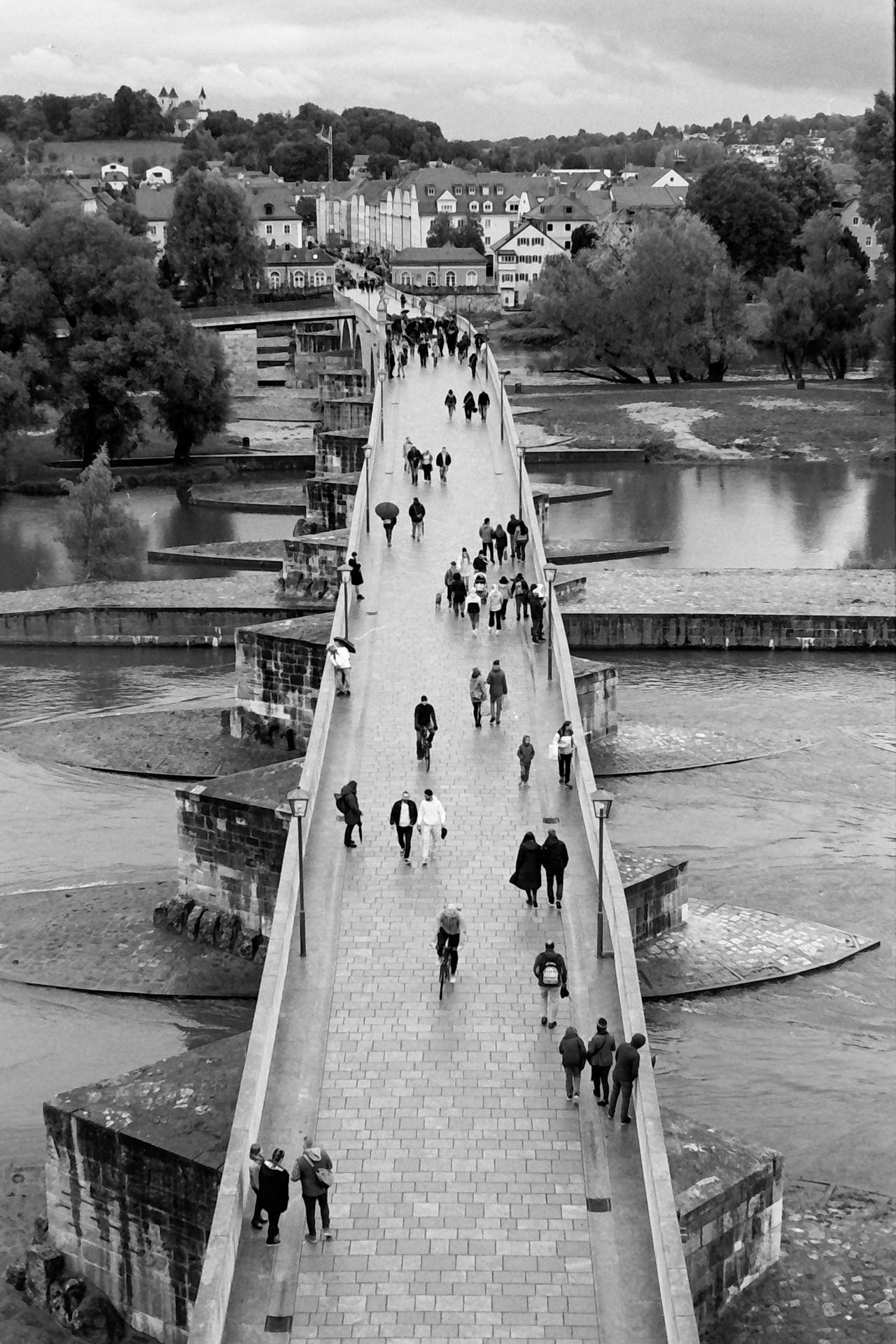
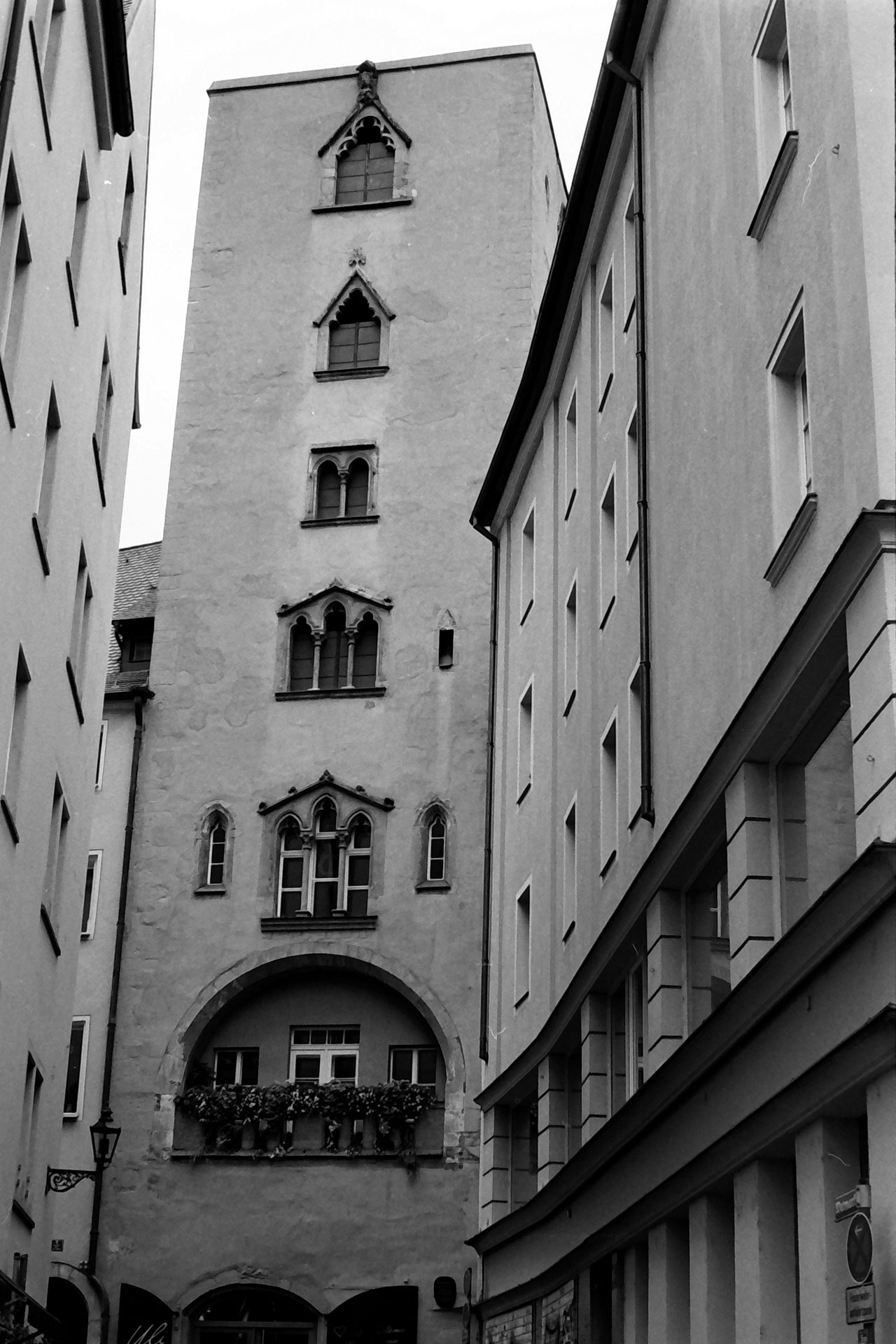
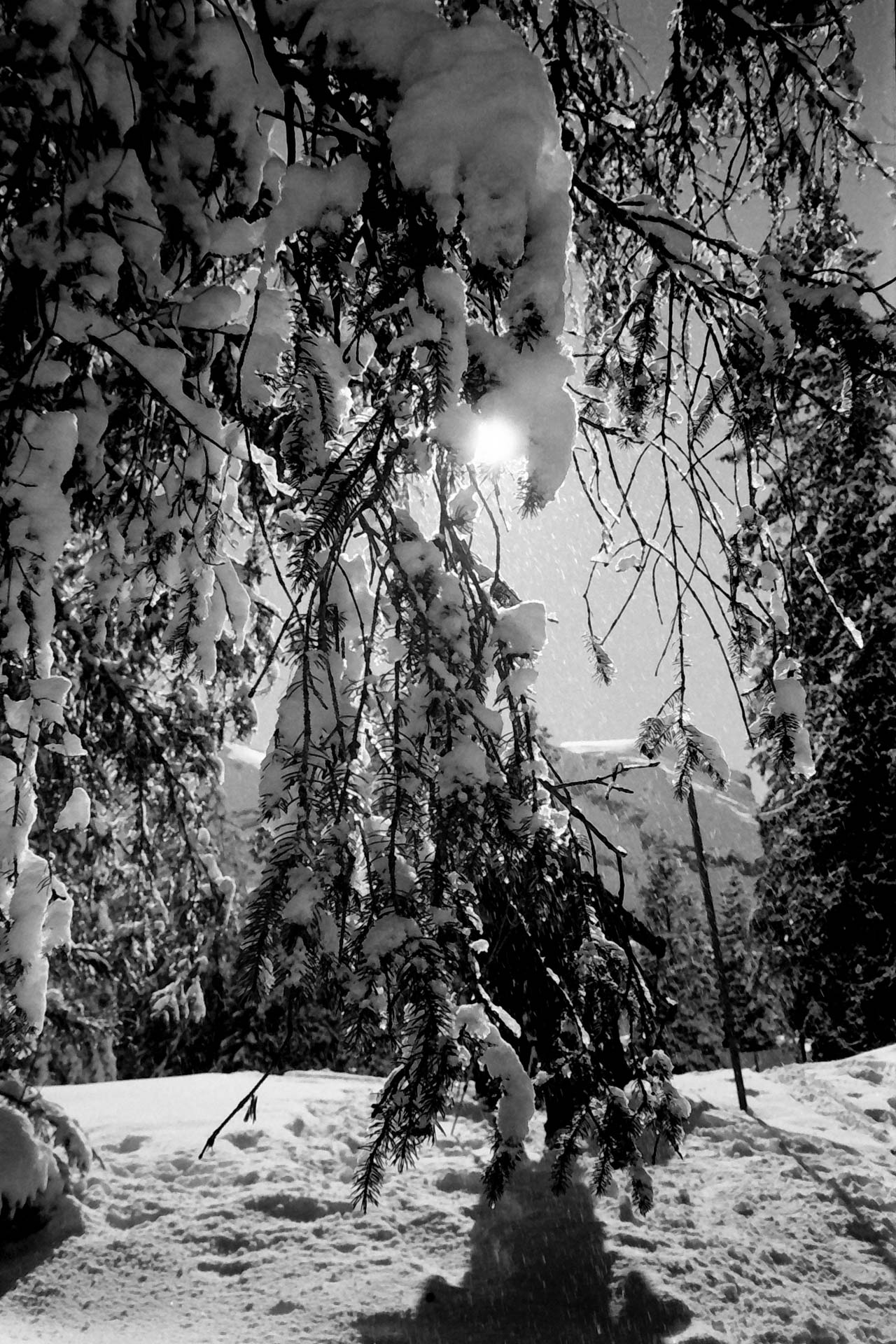
Fotonovum Diadigifix
But the idea of capturing a film source by photographing it has big potential. It is easiest with slides. In this case, no negative-positive inversion necessary. There is also no orange colour layer in your negatives that needs to be removed. And the comparison between the original and the digital result is easy.
On the other hand, the wide contrast range of slide films can be a challenge. But then, modern digital cameras can handle this. So why not use a camera for what I will continue to call negative scanning, despite we are actually rather talking of a reproduction.
When I had to find a solution for the 20,000 slides our father had left us after he died, I came across a solution called Diadigifix by the German manufacturer, Fotonovum. A digital camera and a suitable macro lens are all it takes to use this conversion kit for slide projectors to capture the lit-through slide. All you need, including the material for a sturdy base, can be had for €100 (without camera and lens, of course).
So, I built a scanning device for slides. A tray with 50 frames can be processed within a few minutes. All the details are here in this Macfilos article. It also explains why I am using a Canon APS-C camera (EOS M5, with the old, shot-lived EOS APS-C mount) for this special purpose.
The good old 100mm EOS macro, an excellent lens, conveniently turns into a 150, leaving enough distance between the to-be-photographed object and the camera. Today there are other options, of course, both in terms of camera and lens (think of Fujifilm or full-frame systems).
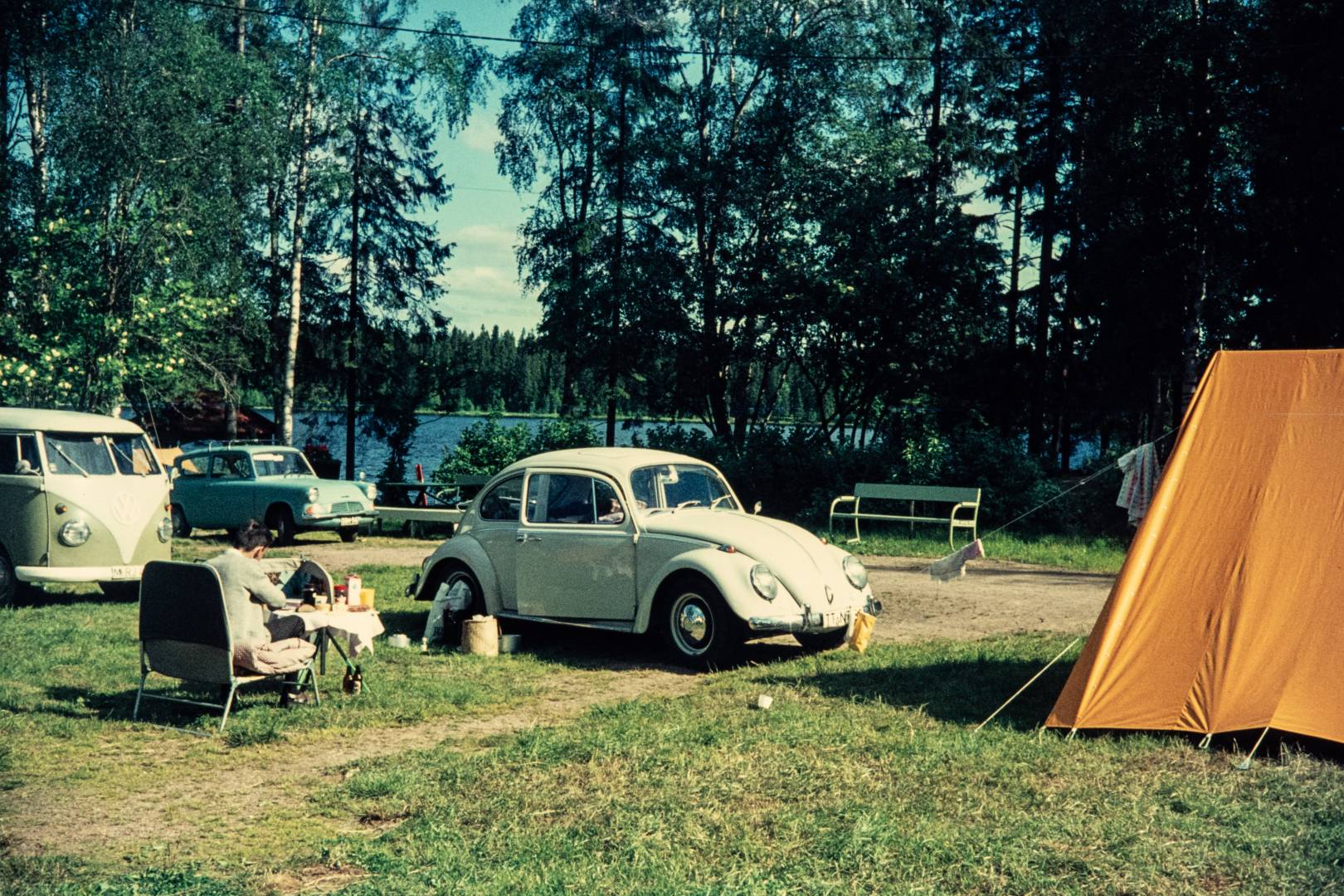
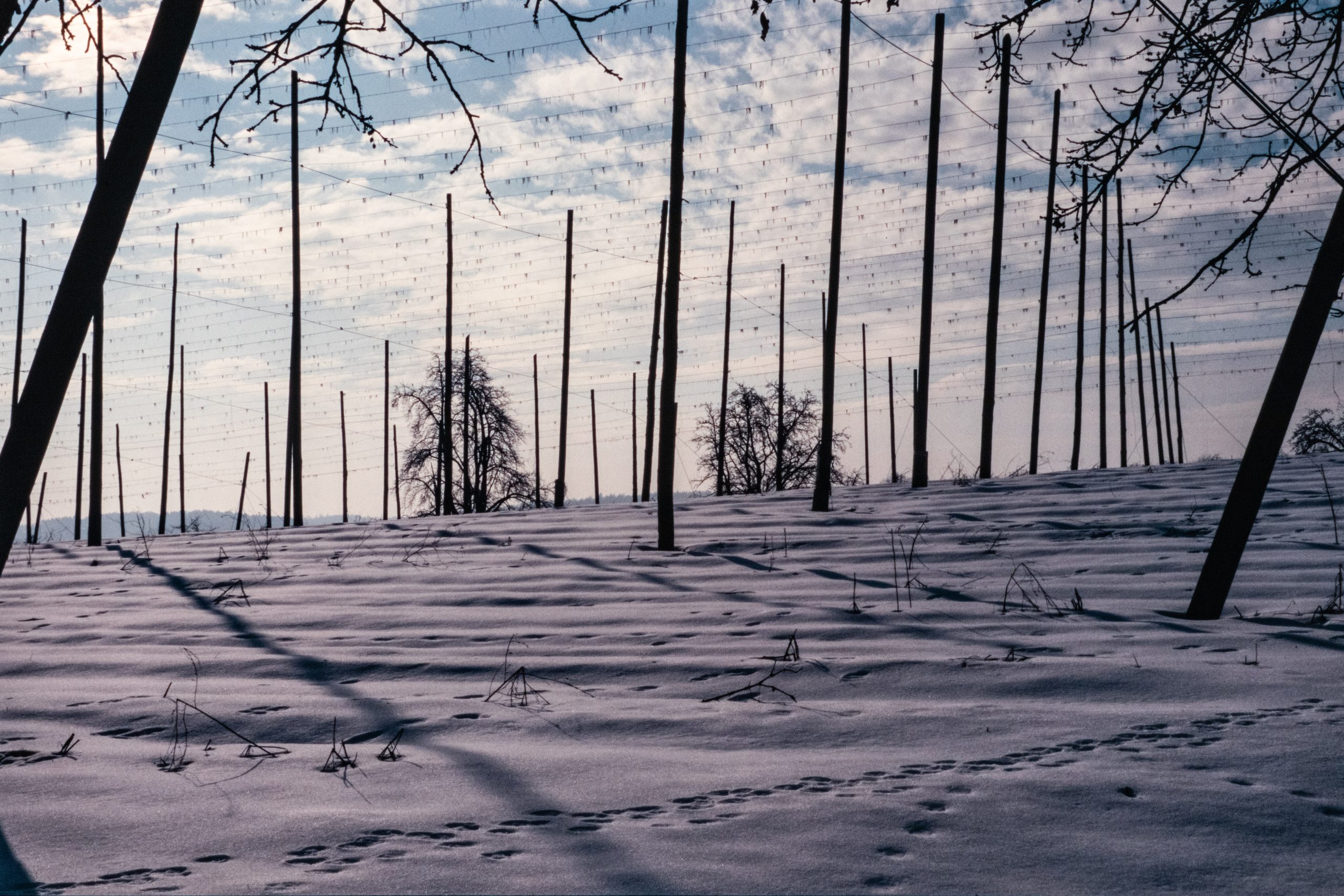
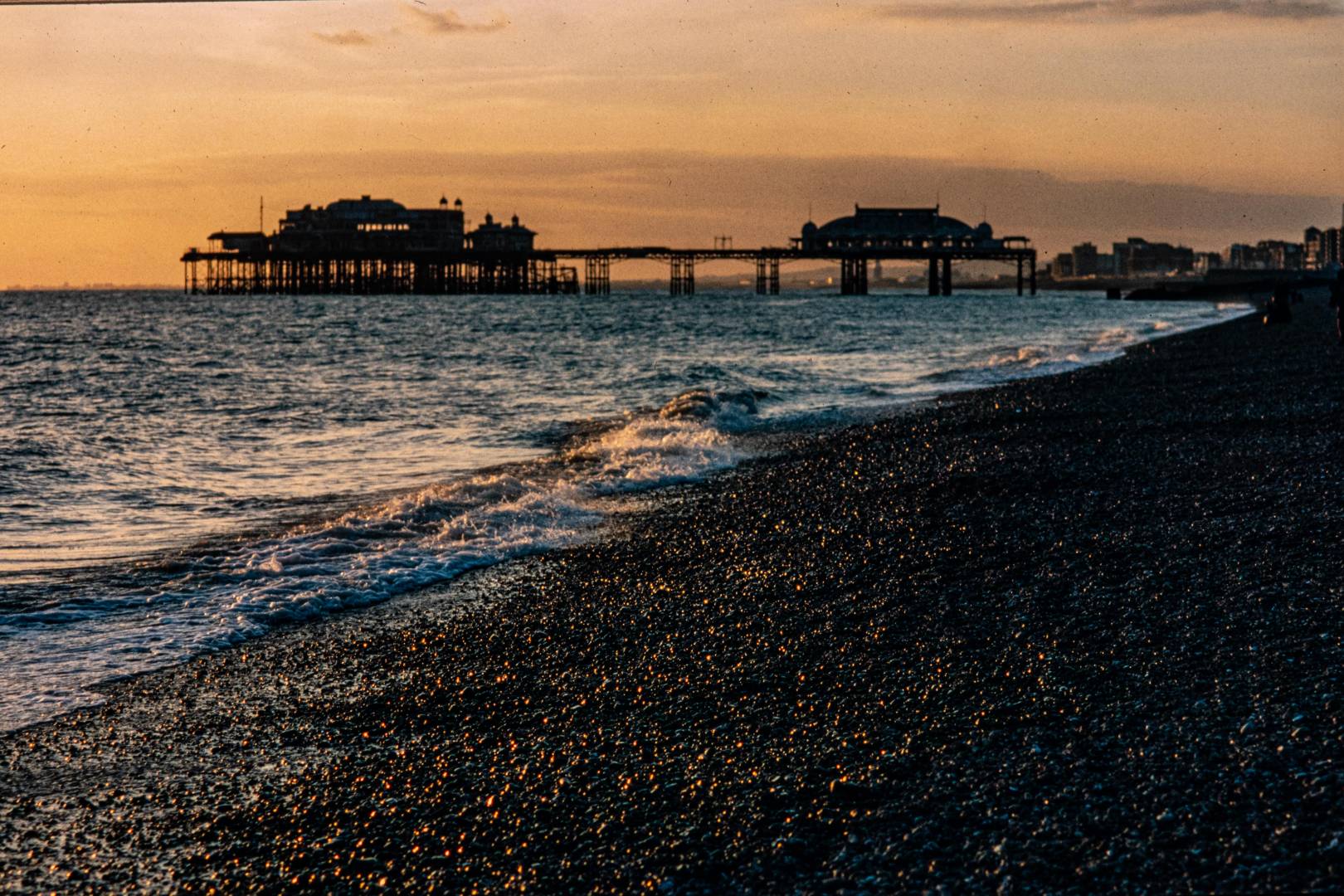
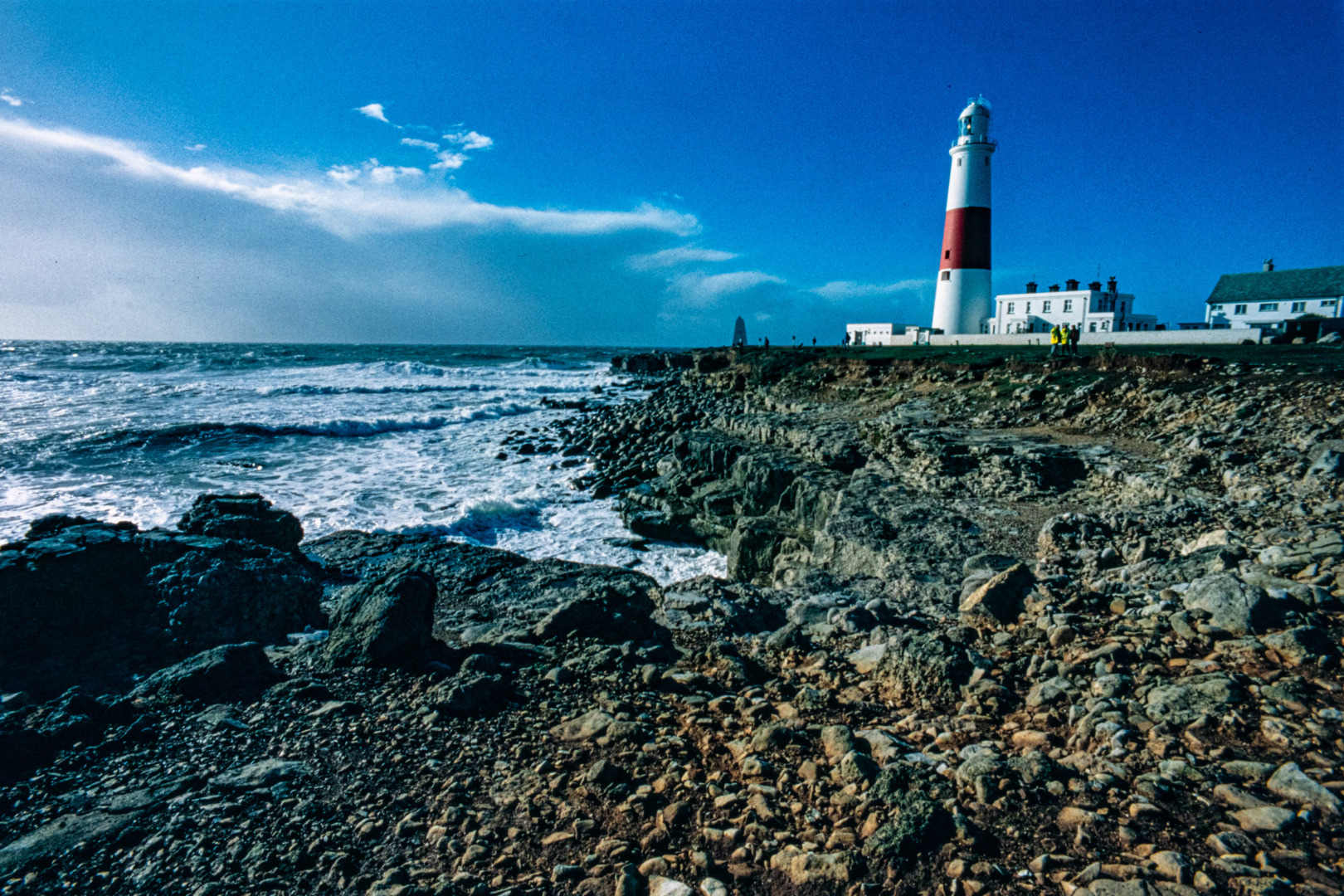
And what about negatives?
However, as flawlessly as my DIY solution works, it can’t be employed for negative scanning. You wouldn’t put single negatives into slide mounts, would you? And with the return to home processing my black and white films, I took up the search for a viable solution again.
The results had to be significantly better than what the Rollei produces, and it had to be a fast process. I just can’t invest several minutes in scanning one single negative. In the end, this would result in hours of post-processing for a single roll with its 36 images.
The solution was found in Berlin. Whenever I am there, I pay Fotoimpex a visit. It is a store entirely dedicated to film photography. They also produce ADOX films (and, as it seems, the Leica Monopan 50 as well), and all necessary chemicals. The staff in the shop near Alexanderplatz are friendly and knowledgeable, as are many of the fellow customers.
If you can’t get to Berlin, you can also order online from Fotoimpex. Certainly, it is a business that deserves our support. They are really doing a lot for #filmisnotdead.
Negative Supply is the next option
Back to my negative scanning needs: Fotoimpex is the German distributor for the products by Negative Supply from the US. Basically, these are light sources (evenly lit by high CRI LEDs) and film holders. You then add a camera with a macro lens and a copy stand, and you have all you require.
Several kits are offered. But as I already had an unused copy stand (I once bought it cheap, second-hand for producing slides from images in books for presentations in art history), I went for single items.
Choosing between Negative Supply’s amateur and pro line, I invested in the most expensive negative carrier and never regretted it. What I actually use is the Light Source Mini (97 CRI), and, the biggest luxury of the whole setup, the Pro Film Carrier 35 MK2, plus a few accessory parts.
The light source is crucial indeed, and a high CRI index guarantees high colour fidelity. 97 is pretty good, and the model I selected has the additional advantage of being large enough for digitising medium format (the real 6x6cm) negatives or slides. Of course, you need a different film carrier in this case.
All parts are of excellent manufacturing quality, and it is a pure joy to work with them. But honestly, the amateur line products would do the job as well, and you wouldn’t need to fork out more than €800.
And camerawise? The old Canon EOS with the 100mm Macro would have been an option. But here, distance (so welcome for my slide digitisation device) would be too big, and the setup would have become more prone to shaking.
So, I tried the Leica SL2. And that APO-Macro-Elmarit-TL 1:2.8/60 ASPH from the APC-Line in the drawer. It means that I only use less than half of the camera’s 47 megapixel resolution, but hey, at some point the grain of your film is the limiting factor anyway.
The results are images with a 5504×3664 pixel size. Twenty Megapixel DNG files, that is, with massive leeway for post-processing. More tests with a “real” full-frame solution (L-Mount camera and Panasonic or Sigma lens) are planned. I will report back in due time.
Negative scanning is almost impossible without dedicated software
The question of how to convert a negative into a positive remains. The small Rollei scanner is doing this with its built-in software. The Plustek was operated with SilverFast. For my current negative scanning system, I use a mighty Lightroom plugin called Negative Lab Pro.
Yes, it costs $100, but you can use it as often as you want, and the results are excellent both with colour and black-and-white negatives. It was KJ Vogelius from Sweden who first made me aware of this option in a very recommendable article in his wonderful blog. Special thanks to him!
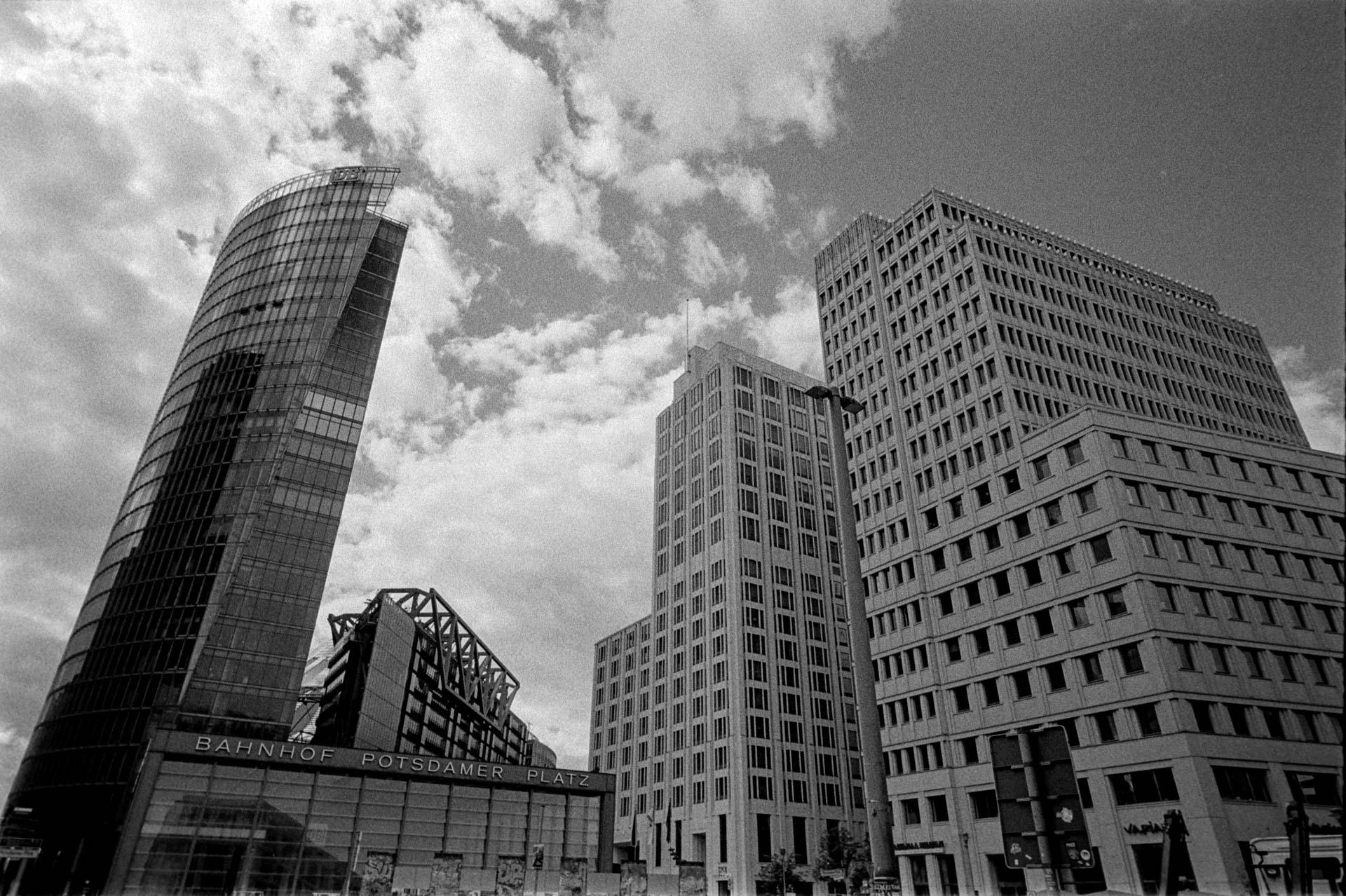
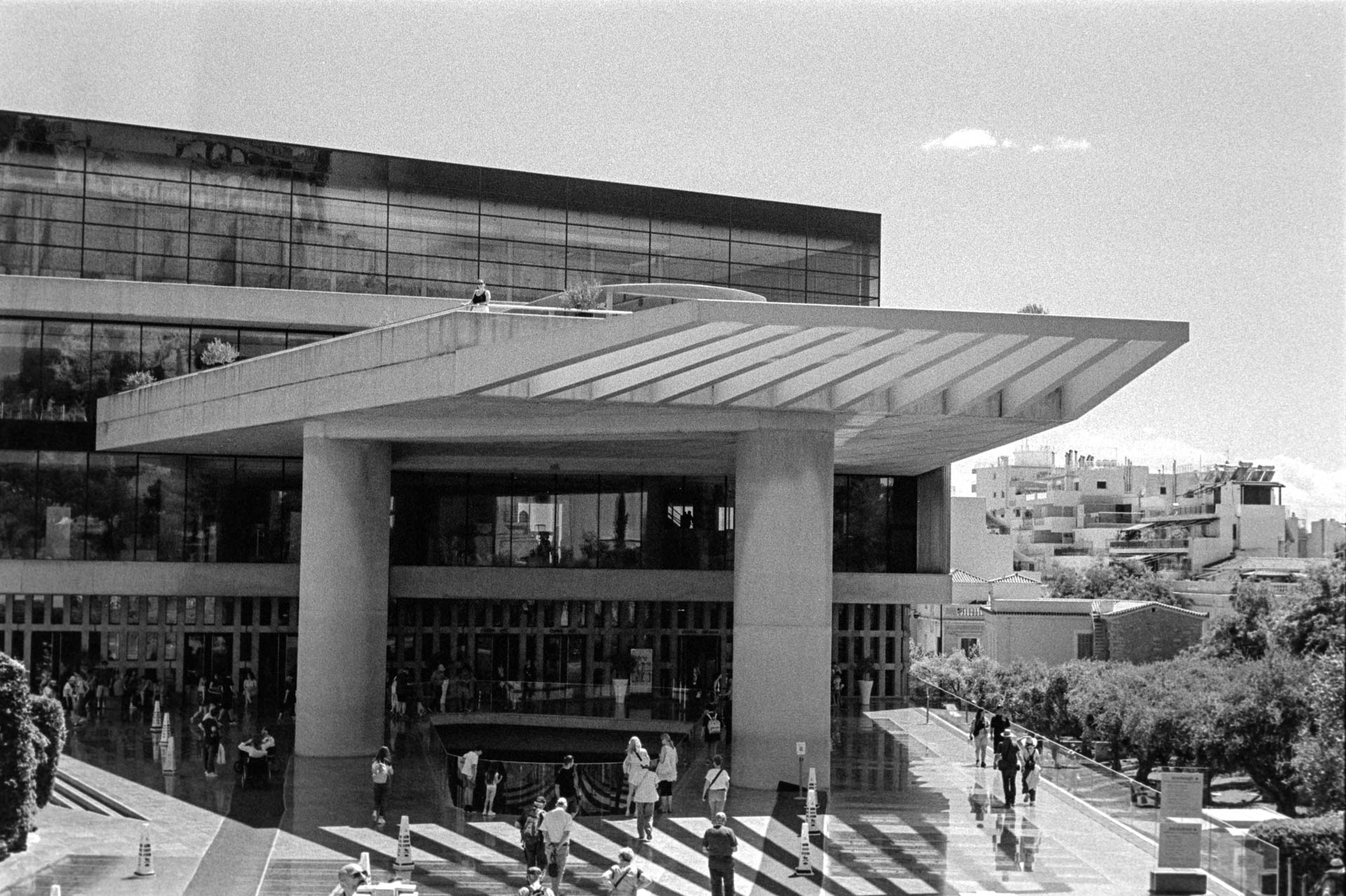
Finally, it is worthwhile to consider what you really want to achieve with your negative scanning. Do you need high-end digital versions of your images, taken with the best film-loading cameras ever made? Or is it more about keeping memories, about freezing significant moments, maybe also about turning back the clock a few years?
If it’s more about such emotions, some modest technology might well be good enough. Going through my archives, I found some images of old friends, and digitised them. Even the mediocre results from the inexpensive Rollei scanner found a positive echo.
While not showing these private images of others, I am happy to take you on a trip down memory lane into my own past. This result of negative scanning is certainly not great, but it made me smile.
Negative scanning options prove: Film is not dead!
In conclusion, I want to highlight that there do exist several options for in-house negative scanning, for different needs and for different budgets. As long as such a range of devices and technologies exists, film will not die.
This is neither in respect to all the carefully archived negative strips, nor when it comes to producing new photos on film — whether it be the good old Kodak TriX, the new Leitz Monopan or some colour material.
We still have all that we need to work this process, from loading a new cartridge into your camera to prints for your walls or albums. And that’s fantastic news!
Make a donation to help with our running costs
Did you know that Macfilos is run by five photography enthusiasts based in the UK, USA and Europe? We cover all the substantial costs of running the site, and we do not carry advertising because it spoils readers’ enjoyment. Every amount, however small, will be appreciated, and we will write to acknowledge your generosity.

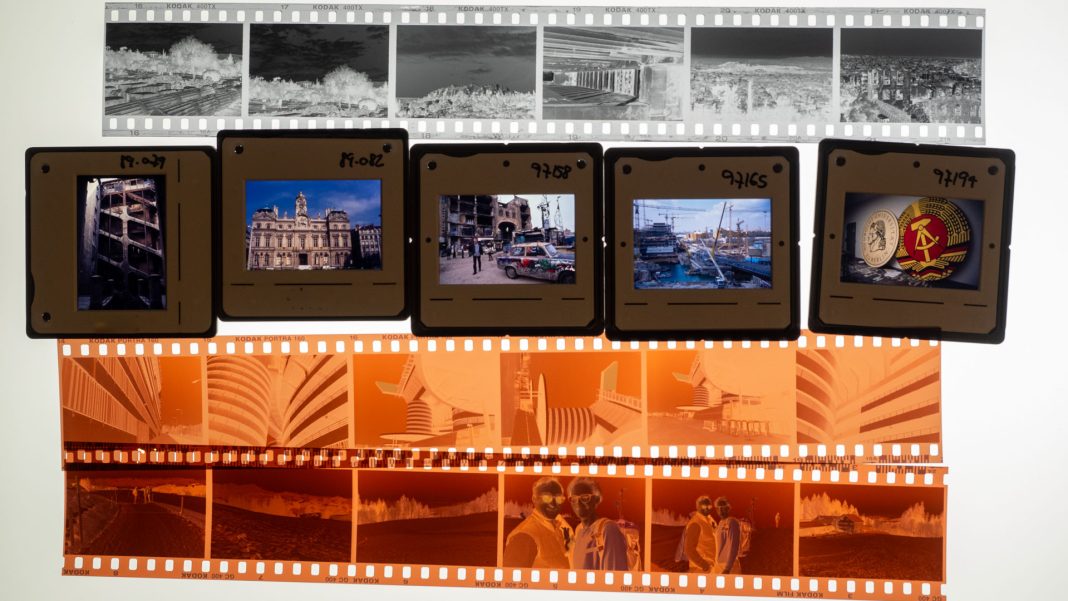
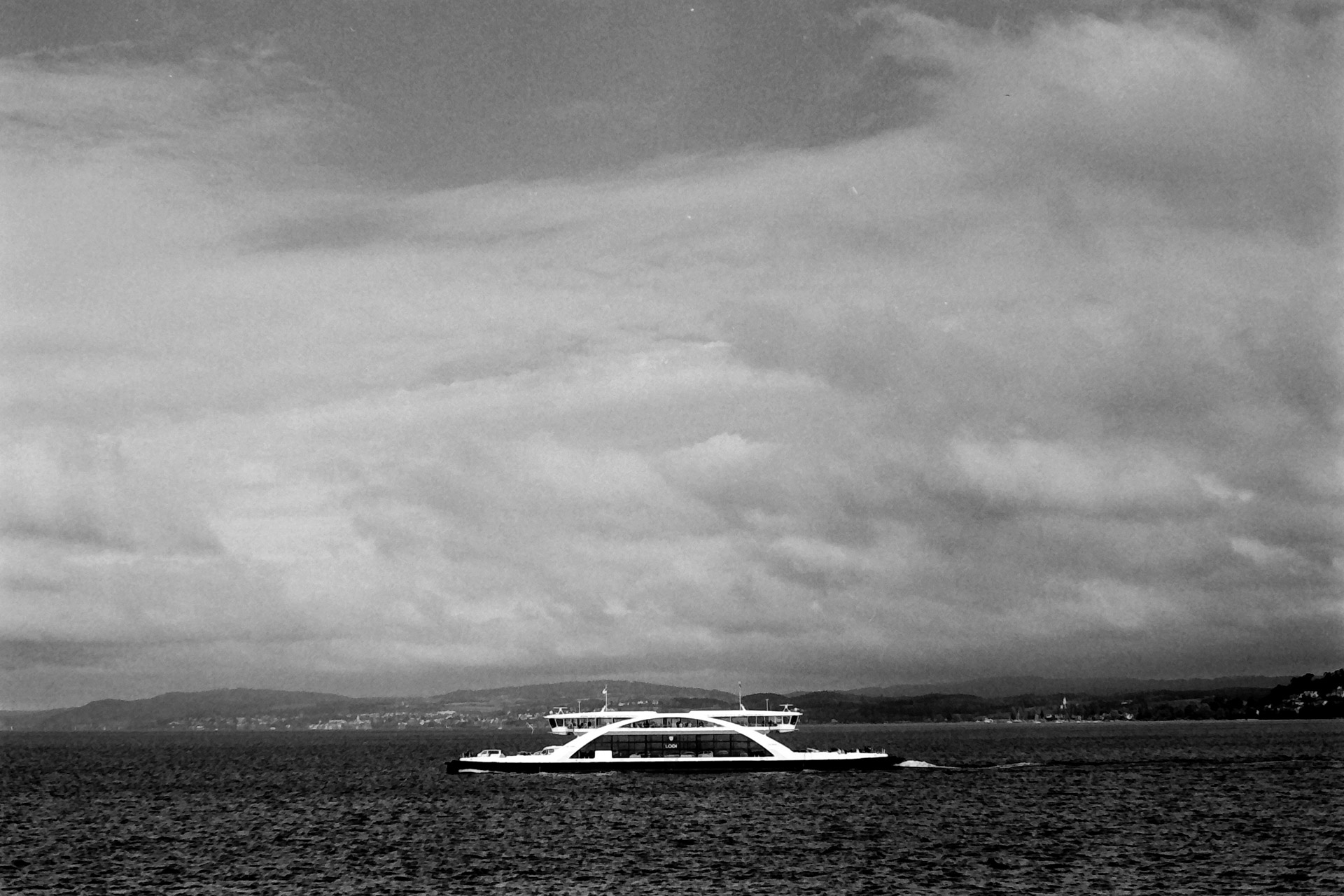
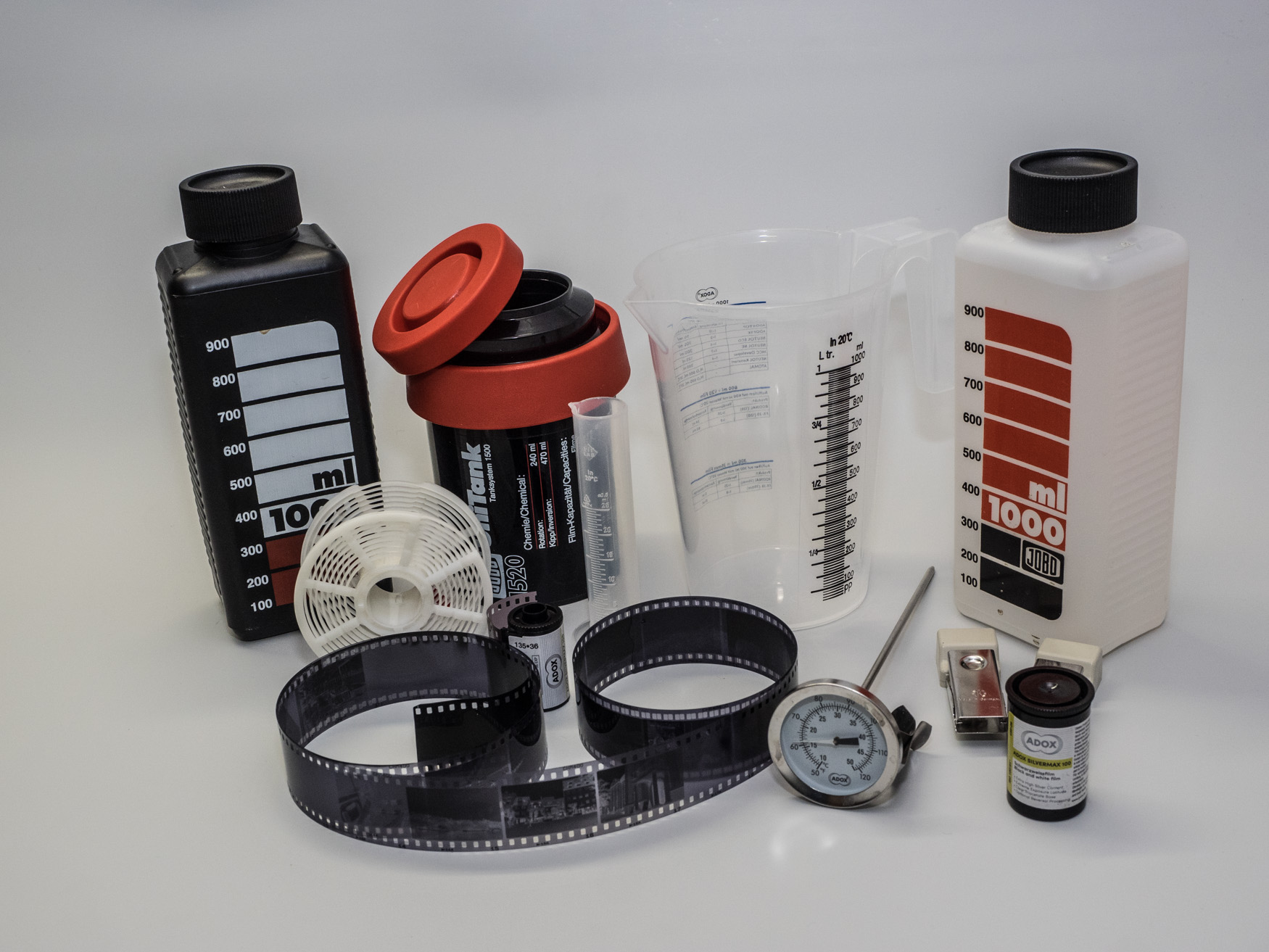
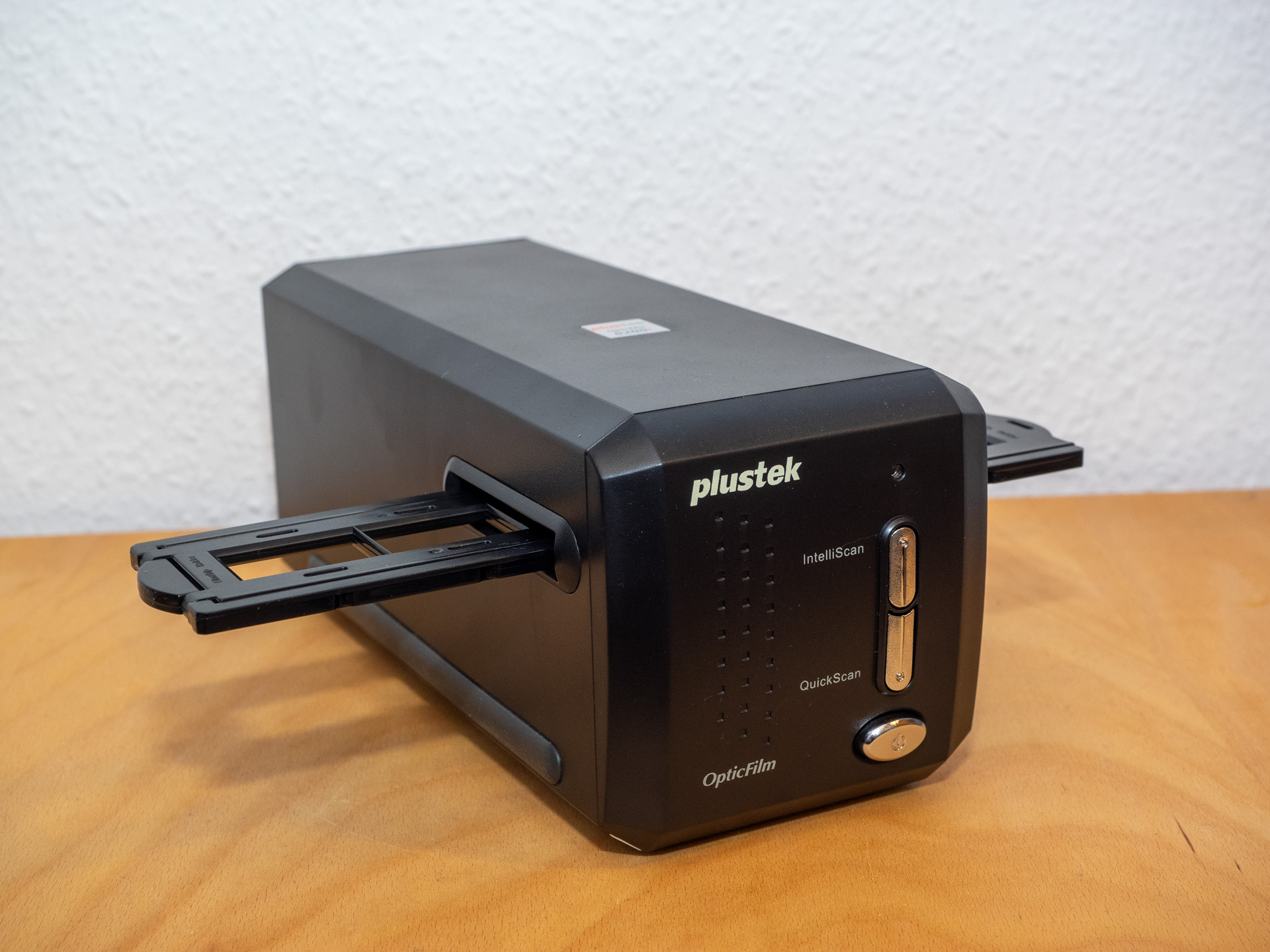
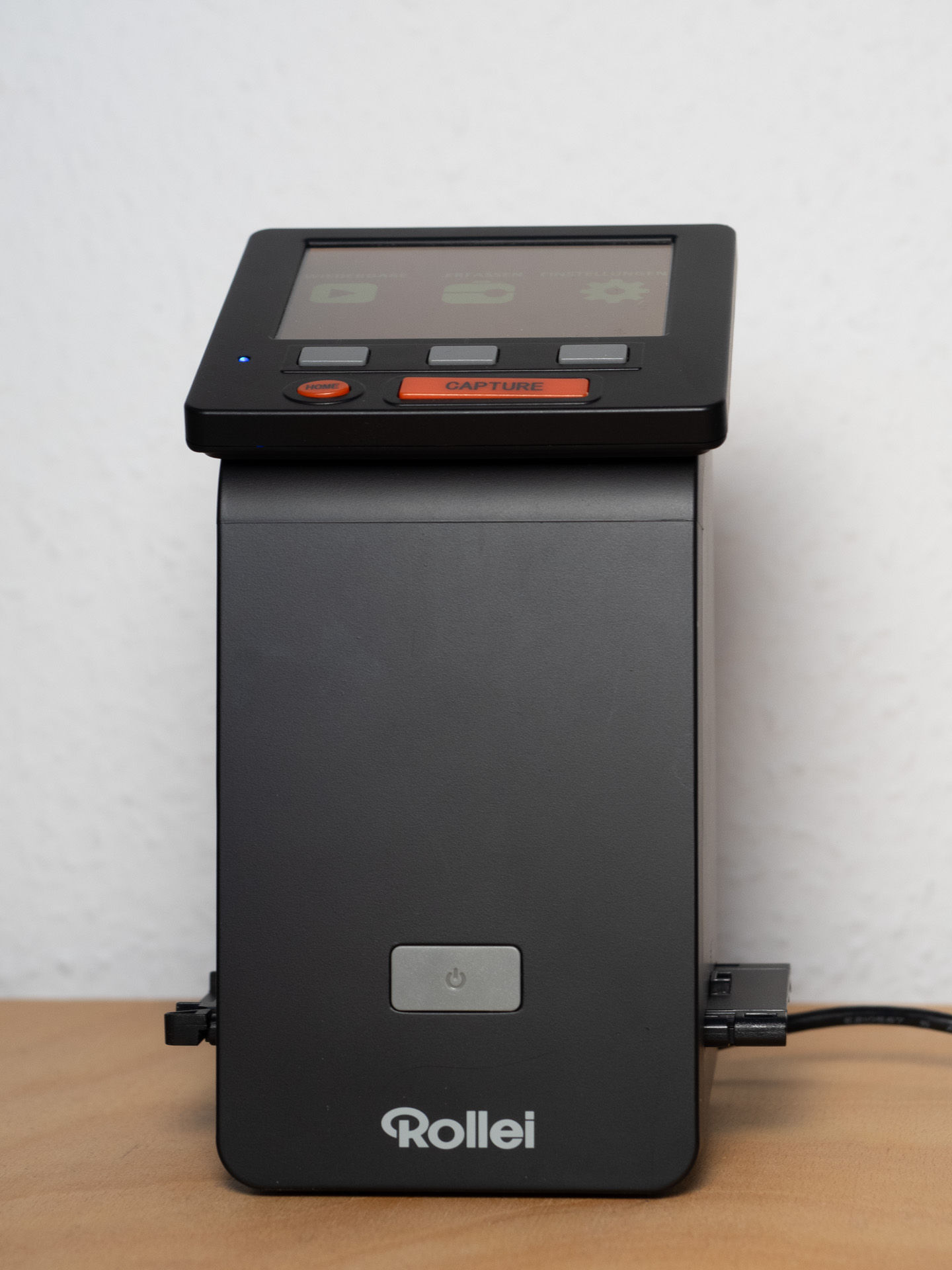
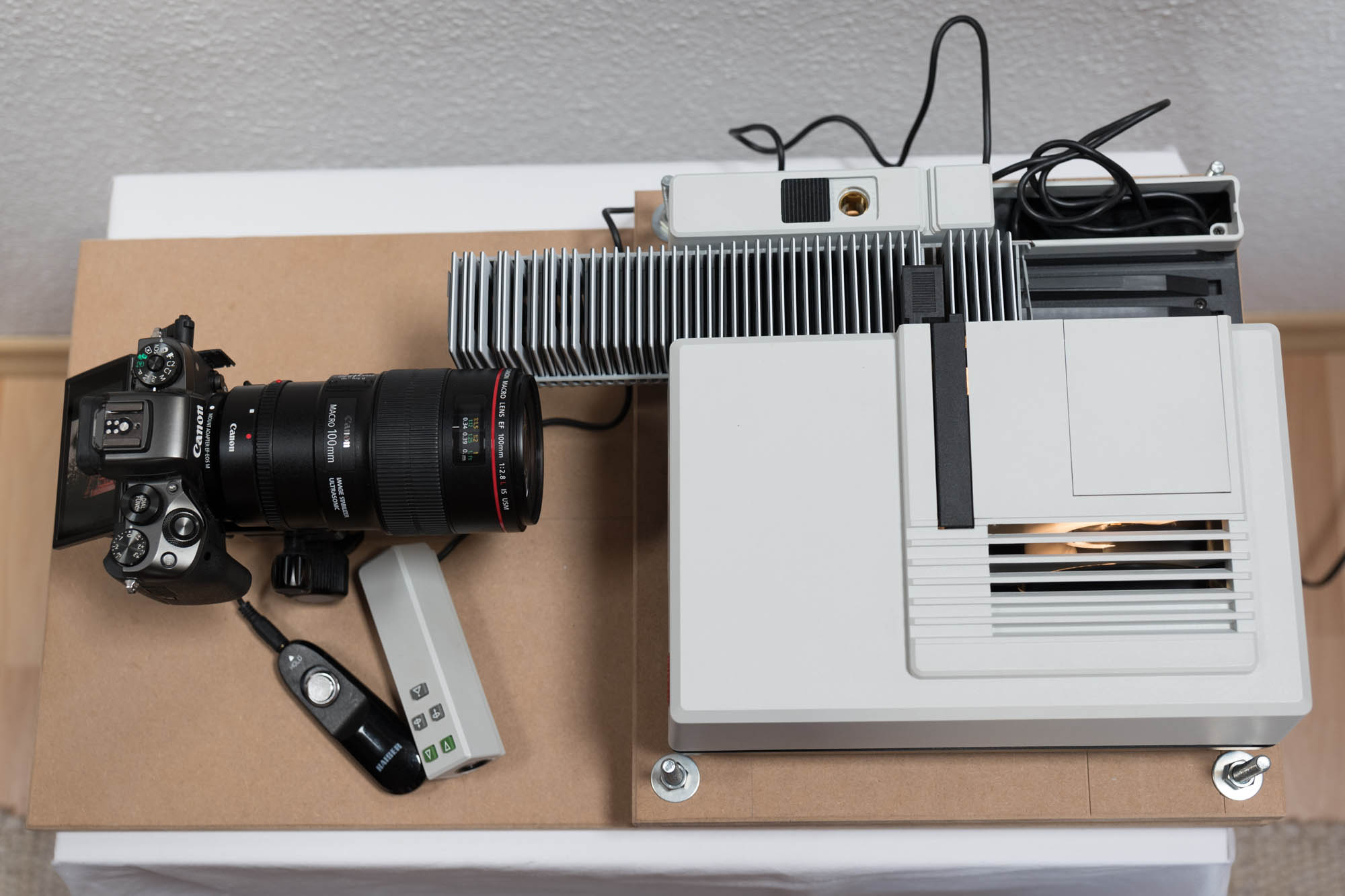
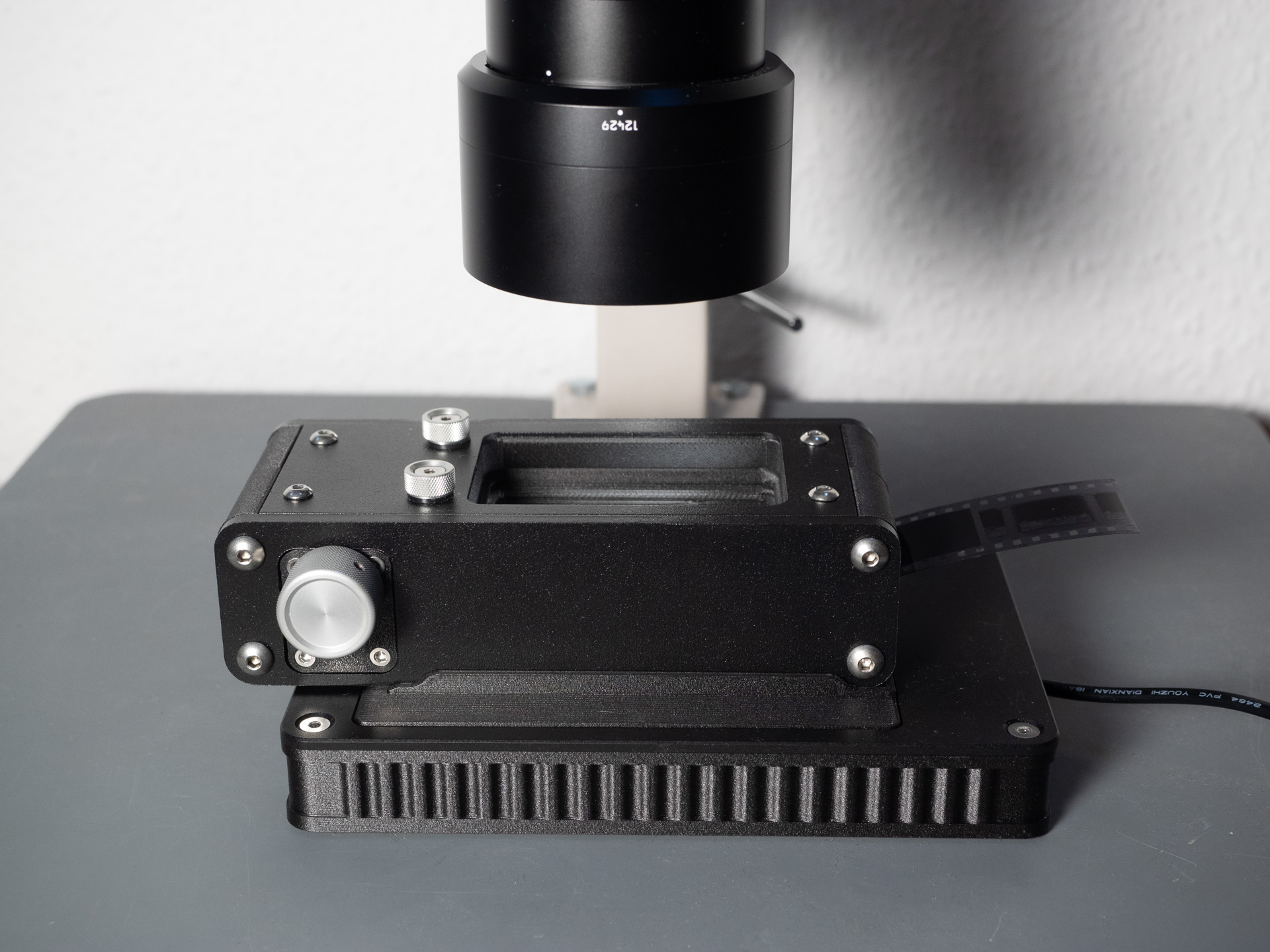
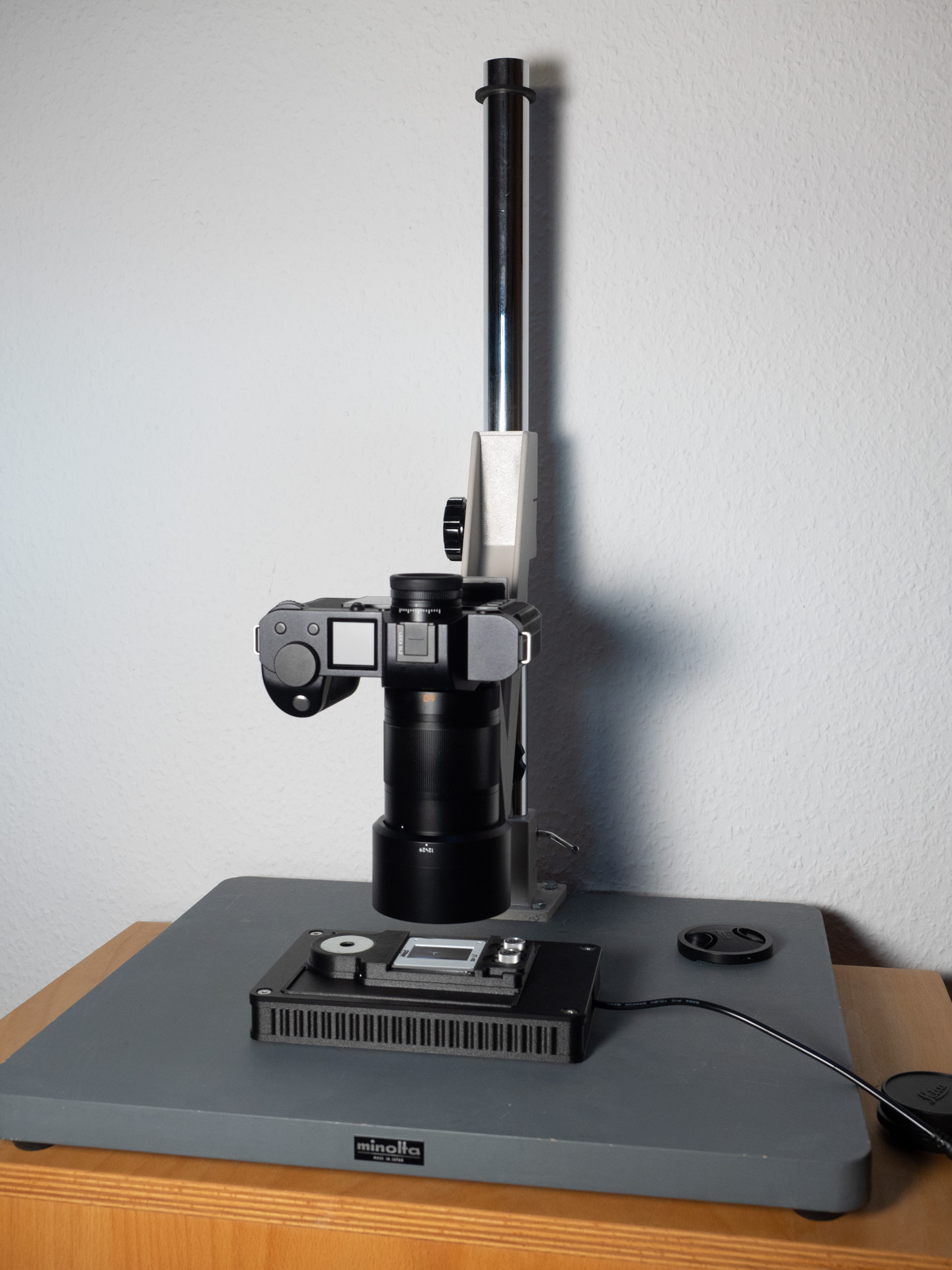
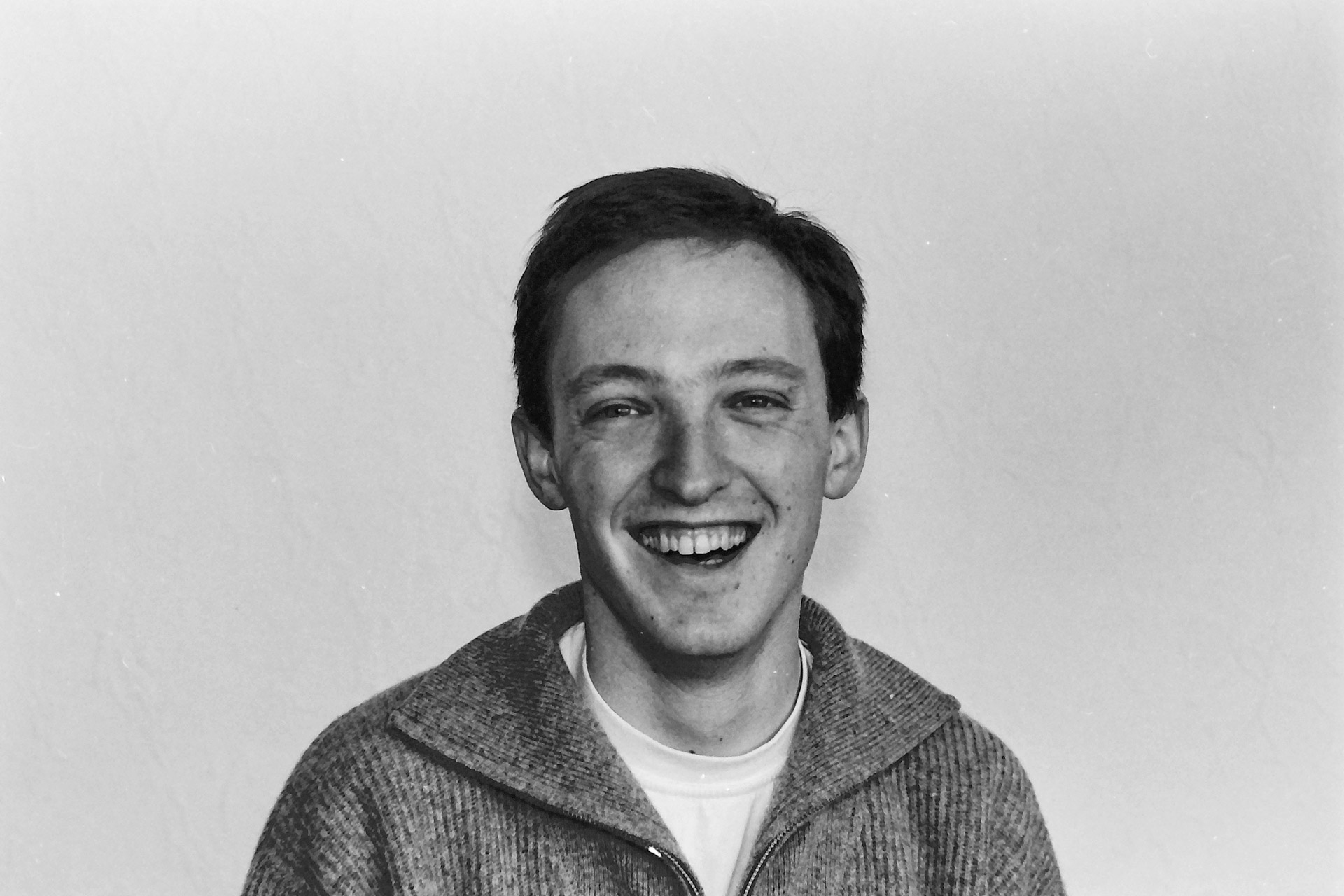
I used an Epson V700 and Silverfast software to scan 4,000 or so negatives in 2021 during the lock-down periods. Silverfast did a really good job with the various film types I had used over the years. Interestingly all the Kodak and Fuji films (which I mostly used) had survived pretty well, but I had a few Agfa films which had degraded quite significantly. I even managed to scan some tiny 110 films.
One further option (may not still be available) is that Nikon sold a slide/film holder allowing you to photograph your negatives using a macro lens and light source. It only offered JPG as output but from what I’ve seen it did a good job of converting from negatives. My Epson seems to have died a few months ago and I would be more tempted to get something like the Valoi holders and use a macro lens for any future film scans.
I have an Epson V550 scanner which is unused and boxed. For some reason, I bought it some years ago for a project that didn’t materialise. And then didn’t set it up. I’d be happy to give it to any reader, provided we can arrange an easy handover in the London area. Drop me at line at mike@macfilos.com if you are interested.
Just one additional thought which I forgot to write yesterday. I can confirm that the Monopan film is made by Adox. How do I know it for sure? They told it to me when I bought it in a Leica Store in my city In any case, it is obvious that it is from Adox at the latest when you open the box. The film canister is identical.
For those who have not tried it yet: it is an interesting film. I liked the look.
Great article! You might like Valoi’s Easy35/Easy120, which is like Negative Supply but uses tubes so you can create more consistent results and not worry about external light.
Also, for converting negatives in Lightroom, etc. Cinestill has their CS NEGATIVE+ which is pretty nice.
No mention of the NOVOFLEX CASTEL-COP-DIGI slide / film-strip duplicator for use with a regular camera and macro focusing lens, lens / bellows, or a reversed zoom lens. Please consider accessing the YouTube demo. Requires additional Novoflex accessories which are easily sourced both new and s/h.
As a active photographer since 70,s as a teenager with Pentax MX and later Olympus OM-4 who I still have I had a lot of film. For some 10-15 years ago I bought a Plustek 8200i and start scan, finding Sillverfast to awkward to use but Vuescan ok. Did some restart to film again when Kodak Portra came, quite easy to develop with C-41 metod.
Unfortunately my scanner broke after some three year of use, a cost of 400€ again? No. And now is film so expensive, Portra 1€/frame!
The biggest advantage with film is storage. It can´t disappear without you take it and throw it. A digital file? It can go anywhere I almost lost some years of work when my external drive tricked me. And I don´t thrust myself of storage discipline, and are files available after a decade or two?
I would really like to go on with film, buy me a Leica M-A for the rest of my life.
I forgot to mention Vuescan software. I used it instead of silverfast and it works with virtually every scanner ever made. I have not used it for about 5 years but it was great.
An excellent article on the current scanning situation. I hated Silverfast as it was not user friendly, expensive, and if you had to buy another scanner you had to pay for a new version which is a total ripoff!
I am astonished that new scanners of the Nikon quality have not been released.
Another. software option is On1 photo raw 2026 that was just released. It can now handle negatives. On1 is my favourite image editor and blows Lightroom out of the water in my experience.
Thank you very much for the interesting article. I guess, the question whether you should digitise the neagtives/ slide film yourself is a quuestion any film photographer will face at some point in time.
After long deliberation I decided some months ago I decided to go for a dedicated film scanner (Reflecta RPS 10S) and I still believe that a dedicated film scanner is still the best option. The biggest advantage (for coolour and slide film) is of course dust and scratch removal. Furthermore, the colour conversion in Negative Lab Pro does not fully convince me. I made a test and scanned the same picture twice. The first timne as a negative with colour conversion in Silverfast. The second time I scanned it as a positive and did the clolor conversion in Negative Lab Pro. The conversion in Silverfast was significantly better than the one with Negative Lab Pro. Of course, with some processing you can probably get to a more similar conversion but I prefer to avoid this additional work if possible. I repeated the experiment with some other pictures and the color conversions in Silverfast were consistently better and more true-to-life than in Negative Lab Pro.
In general I#M quite happy with the Reflecta scanner (in some countries sold as “Pacifc Imaging”) I get a large amount of detail and large detail prints (I tried up to DIN A3+) are possible without any problems. If Macfilos is interested, I’m happy to share my experience with the scanner.
Thank you for posting this interesting article.
I quote:
“The models by Plustek for instance, are not high-end but still feasible…… The results were okay, but the workflow needs a lot of patience.”
In my case it took several years starting in 2013 with my Plustek scanner to scan my and of some of my mother’s slide collection: some 4000 slides. But the resulting files sitting on my computer are a real joy to view with just a scroll of the mouse. I regularly browse through them.
So to me, if a job is worth doing, it is worth doing well. My scans of my nearly fifty-year-old slide photographs of Oman (available on the web) are still appreciated today by Omanis young and old and by those of us oldies who served in The Sultan’s Armed Forces.
I also enjoyed writing for Macfilos in December 2022:
“Vivid Velvia: Ten Fujifilm landscape photographs scanned after a quarter century and just ready for the wall.”
However, just last year I donated my scanner to the charity shop of our local hospice. My switch to digital photography was total, even though I still have five rolls of Velvia and five rolls of Ektar 100 which have been sitting in my deep freezer since 2012. I might give them to the charity shop at some stage. I will however keep my working Minolta 303b as a reminder of how hard work it was to take decent photographs all those years ago.
Chris
Thank you, Chris,
for your feedback. Compliments on your labour of love. Good to read that you are still browsing through these old images. And it is certainly a sensible decision to go 100 per cent digital, it reduces complexity in many aspects. What’s hindering me are a few beautiful film cameras. I just couldn’t bear it to have them in same drawer and seeing no light…
All the best, Jörg-Peter